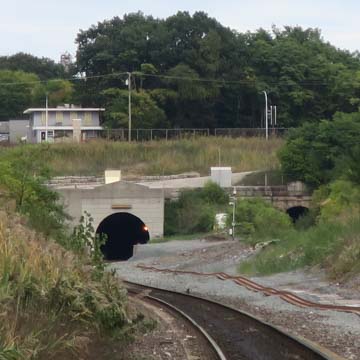In 1995 the new St. Clair Tunnel was dedicated, replacing the one opened in 1891. It carries the Grand Trunk and the Canadian National Railroads under the St. Clair River between Port Huron and Sarnia. It is North America's largest international underwater rail tunnel and is the same length as the earlier tunnel. To excavate the tunnel under the river, a consortium from the U.S., Canada, and Europe employed large-bore technology perfected in digging the Chunnel between Great Britain and France. The large diameter, three-story-tall boring machine, named the Excalibore, was built by Lovt Tunnel Equipment of Etobicoke, Ontario. The new tunnel runs parallel to the 1891 tunnel and is nine feet larger in diameter. Linking eastern and central Canada with Chicago, the new tunnel can accommodate stacked intermodal containers and auto-parts boxcars. Some 275,000 freight cars travel through the tunnel annually.
You are here
New St. Clair Tunnel
If SAH Archipedia has been useful to you, please consider supporting it.
SAH Archipedia tells the story of the United States through its buildings, landscapes, and cities. This freely available resource empowers the public with authoritative knowledge that deepens their understanding and appreciation of the built environment. But the Society of Architectural Historians, which created SAH Archipedia with University of Virginia Press, needs your support to maintain the high-caliber research, writing, photography, cartography, editing, design, and programming that make SAH Archipedia a trusted online resource available to all who value the history of place, heritage tourism, and learning.


